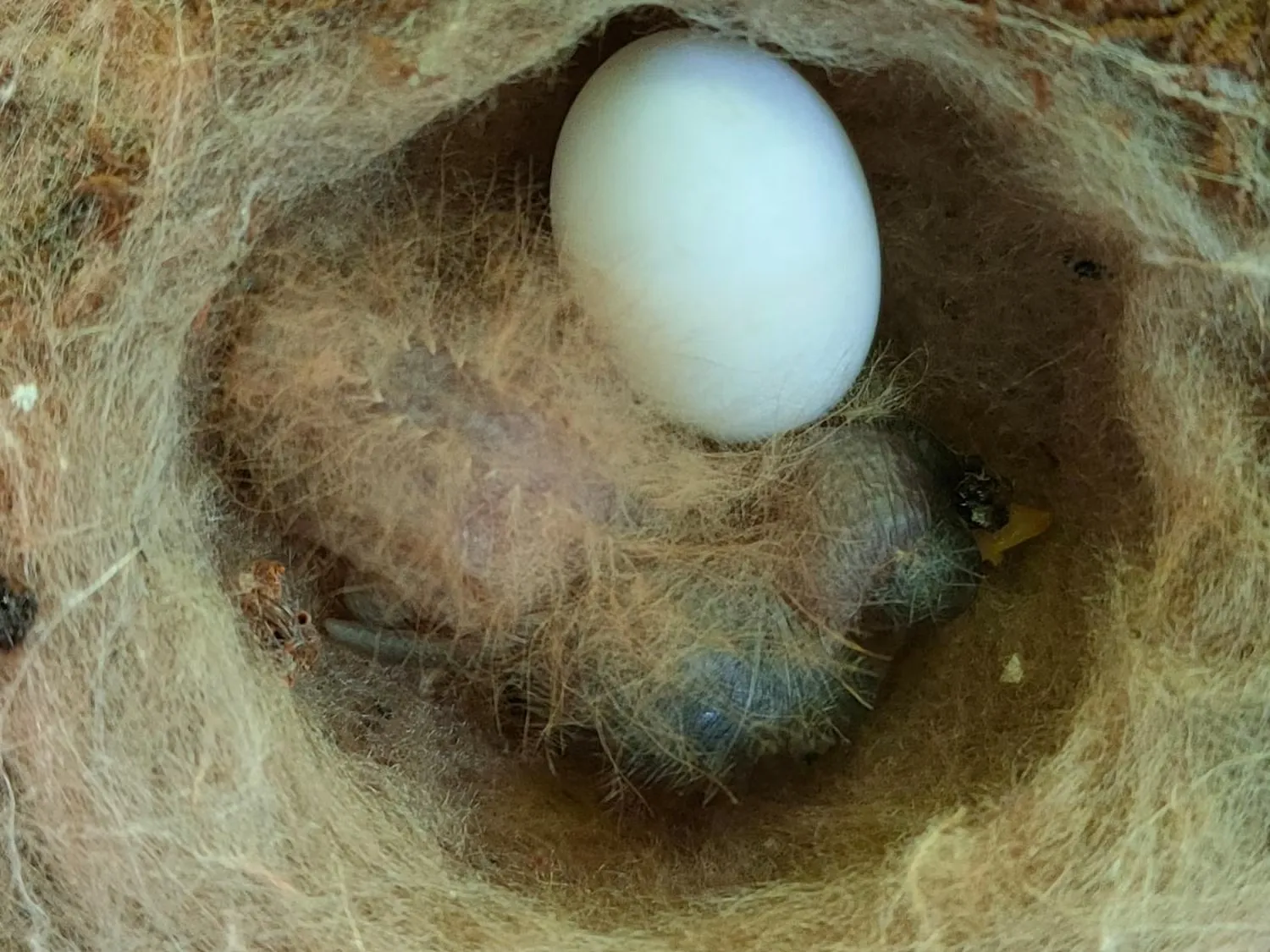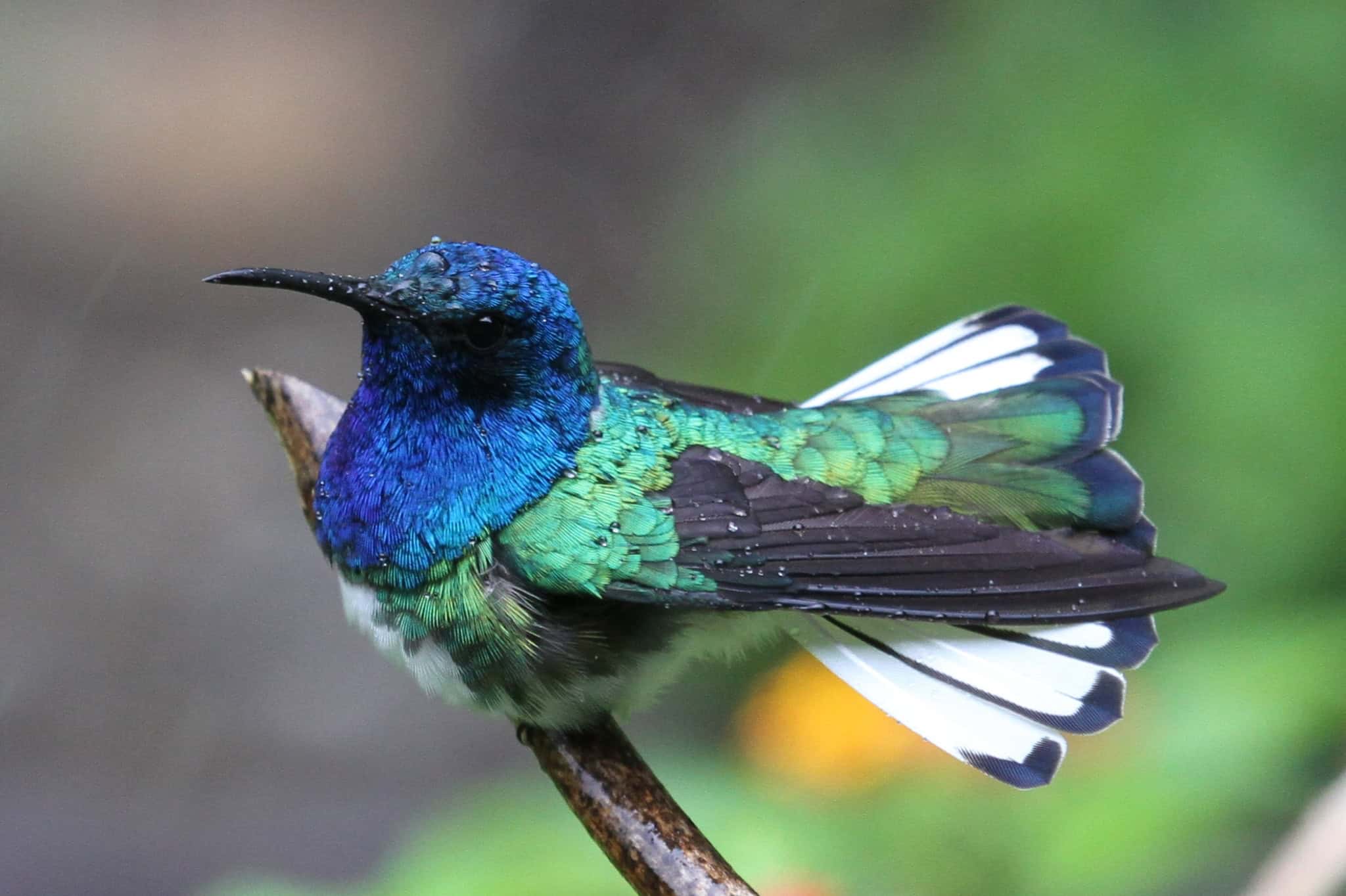A recent study published in Ecology suggests that baby White-necked jacobins (Florisuga mellivora) may have a unique way of avoiding predators. These tropical hummingbirds, native to Mexico, Central America, and parts of South America, appear to mimic dangerous caterpillars in their early stages of life. Researchers observed that newly hatched chicks have fluffy, downy feathers on their backs, resembling venomous caterpillars known for their stinging hairs. This discovery adds to the growing body of research on mimicry as a survival strategy in the animal kingdom.
Researchers Discover Unique Mimicry Adaptation in White-necked Jacobin Hummingbird Chicks
The study took place in Panama’s Soberanía National Park in March 2024 when researchers discovered a White-necked jacobin nest containing an egg. They monitored the nest closely and recorded footage as the chick hatched after approximately 18 to 20 days. To their surprise, the chick’s fluffy dorsal feathers gave it an appearance similar to that of a hazardous caterpillar.
Certain caterpillars possess stinging hairs that can cause pain, irritation, and even severe reactions in predators and humans. This resemblance suggests that the chick may use mimicry to deter potential threats.

The researchers compared their findings with other hummingbird species and discovered that this type of fluffy plumage is relatively rare. The team also noted similarities to the Cinereous mourner (Laniocera hypopyrra), a bird species whose chicks mimic toxic caterpillars.
To determine whether this trait is common among hummingbirds, they examined images of various species online. Their analysis showed that most other hummingbirds lack these specialized down feathers, indicating that this may be a unique adaptation of the White-necked jacobin.
Camouflage and Movement Are Key Survival Strategies for White-necked Jacobin Chicks
In addition to their unusual feathers, the researchers observed that White-necked jacobin chicks inhabit nests covered in seeds from local balsa trees, which also have a hairy appearance. This natural camouflage may enhance their ability to blend into their surroundings rather than strictly relying on mimicry.
However, the team also witnessed the chick moving in a way that resembled the motion of certain caterpillars when a carnivorous wasp was nearby. Given that these birds nest in open, exposed branches, these behaviors may have evolved as a survival mechanism against predators.
This discovery highlights the many mysteries of tropical ecosystems and the importance of continued research. Scientists from institutions such as the University of Colorado – Boulder, the Smithsonian Tropical Research Institute, and the National Science Foundation emphasize the need for further observation to fully understand this behavior.
According to study co-author Jay Falk, many aspects of nesting bird behavior in the tropics remain unknown, and dedicated research efforts could reveal even more fascinating adaptations in the future.


